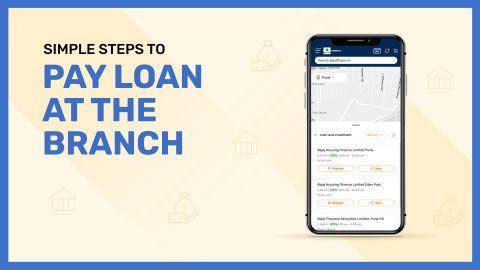Understanding OTP and its importance
A One-Time Password (OTP) is a time-sensitive and system-generated numeric or alphanumeric code used to authenticate identity during online transactions, account logins, or other sensitive operations. Unlike traditional passwords, OTPs are valid for a single transaction or session and expire shortly after being issued. This temporary nature adds a critical security layer to protect users from unauthorised access, especially in digital banking and financial transactions.OTPs serve as a vital component of two-factor authentication (2FA), where users must provide two forms of identification: a static password and a dynamic OTP. This mechanism helps prevent misuse even if the primary credentials are compromised. OTPs are widely used across sectors, including banking, healthcare, e-commerce, insurance, and government services. Their key strength lies in limiting exposure windows for cybercriminals.
Despite being a robust security tool, OTPs can become a vulnerability when users unknowingly share them with fraudsters. Scammers exploit trust and urgency to trick individuals into revealing these codes. As digital threats evolve, understanding the function and importance of OTPs is crucial. Users must recognise OTPs as confidential security keys and follow the golden rule: never share your OTP with anyone, under any circumstances.
Common OTP scam techniques
OTP scams have become increasingly common as fraudsters develop sophisticated ways to trick people into revealing their one-time passwords. These scams rely heavily on social engineering, where attackers manipulate human behaviour and emotions to bypass digital security.One of the most widespread methods is phishing—where attackers impersonate bank representatives, telecom providers, or government officials. They call or message users, claiming urgent account issues or fraudulent transactions, and convince them to share OTPs received via SMS. Once the OTP is disclosed, fraudsters gain access to accounts and complete unauthorised transactions.
Another frequent tactic is smishing (SMS phishing), where users receive texts with malicious links mimicking genuine service providers. These messages urge users to act immediately, often stating their account will be locked. Clicking the link redirects them to a fake website where they are prompted to enter login credentials and OTPs.
Some scammers use fake apps or websites that look identical to official ones. Victims input their data and OTPs without realising the platform is fraudulent. Voice phishing (vishing) also plays a major role, with fraudsters using urgent or threatening language to compel users to act impulsively.
In more advanced cases, fraudsters deploy spyware or keyloggers that silently intercept OTPs or allow remote access to devices. These multi-layered tactics highlight the need for constant vigilance. Recognising these scams and resisting the urge to share OTPs is critical to protecting your financial and digital identity.
Preventive measures against OTP fraud
- Never share your OTP with anyone, regardless of who they claim to be. No bank, government agency, or financial institution will ever ask for your OTP.
- Verify the source of the communication. If you receive a call or message claiming to be from your bank, hang up and call the official customer service number.
- Avoid clicking on suspicious links. Phishing scams often use links that redirect you to fake websites that steal credentials and OTPs.
- Do not install unverified apps. Download applications only from official app stores and check reviews before installing.
- Enable transaction alerts. SMS and email alerts for all your banking transactions can help you act quickly in case of fraud.
- Use biometric authentication. Whenever possible, add an extra layer of security by enabling fingerprint or face recognition for apps.
- Keep your phone secure. Use strong passwords, lock your screen, and avoid sharing your phone with others.
- Update software regularly. Security patches in operating systems and apps can close vulnerabilities often exploited in OTP scams.
- Educate family members. Especially elderly relatives who may be more vulnerable to phone-based scams.
- Report any suspicious activity immediately. If you suspect fraud, inform your bank and block your cards or accounts to prevent further damage.
- Be cautious with call forwarding. Scammers may try to convince you to enable call forwarding, which can redirect OTPs to their devices.
- Use antivirus and anti-malware tools. Protect your mobile device with reputable security apps to detect and prevent spyware or trojans.
Real-life OTP scam stories
In recent years, numerous individuals have fallen prey to OTP scams despite being otherwise cautious digital users. One common pattern involves fraudsters posing as customer care executives. For instance, a working professional received a call from someone claiming to be from her mobile service provider. The caller informed her that her number would be deactivated unless verified immediately. Under pressure, she shared an OTP received via SMS, only to find that her UPI-linked account had been drained within minutes.In another instance, a retired individual received an SMS that appeared to be from his bank, claiming a large transaction had been flagged for verification. The message instructed him to call a helpline number. When he called, he was asked to confirm the OTP sent to his phone. He later discovered that the entire interaction was fake, and he had authorised a transfer without realising it.
Such incidents underline how emotionally manipulative and sophisticated scammers have become. They exploit panic, urgency, and trust to bypass even cautious users. In a third case, a young college student lost money after downloading a fake e-commerce cashback app promoted on social media. The app asked for login credentials and an OTP to link payment methods. Within moments, multiple unauthorised transactions were initiated.
In another real-life story, a businessman received a call claiming to offer a loan top-up. The caller had basic details like his name and last loan amount, which added credibility. Trusting the caller, he shared the OTP received on his phone. Shortly after, the fraudster gained access to his bank account and siphoned off a large sum. The victim later learned the caller had accessed leaked data from a third-party platform. These incidents reinforce the need for extreme caution with OTPs.
These real-world examples illustrate how OTP scams can affect anyone, regardless of age or tech literacy. Awareness and vigilance are the only real defences against such frauds.
Do’s and Don'ts for digital payments
| Do’s | Don'ts |
| Always verify the sender before entering OTPs | Do not share OTP with anyone, even known contacts |
| Use secure and official apps for banking | Avoid clicking on links from unknown sources |
| Enable two-factor authentication for all transactions | Do not store passwords or OTPs on your phone notes |
| Regularly update mobile and security software | Never disclose OTP over phone, email, or chat apps |
| Use transaction alerts to monitor activities | Do not rush during calls or messages that create panic |
| Report any suspicious calls/messages immediately | Never assume a number saved as "bank" is authentic |
| Check URLs for HTTPS and domain name accuracy | Do not use public Wi-Fi for sensitive transactions |
| Use strong and unique passwords for each account | Avoid reusing passwords across financial platforms |
Following these do’s and don’ts helps users develop better digital habits and minimizes the risk of falling into common scam traps. Applying caution and verifying every transaction-related step can significantly improve your digital payment safety.
Awareness about fake helplines and deepfake scams
A rising threat in the digital landscape involves fake helplines and deepfake videos, which are increasingly used to deceive users. Fraudsters create fake customer service numbers and promote them online, often ranking high in search results or appearing on social media platforms. Unsuspecting victims looking for assistance contact these numbers and are misled into sharing sensitive information, including OTPs, banking details, and login credentials.These fake helplines are designed to sound convincing, often mimicking the official tone and language of legitimate organisations. Victims may be asked to verify their identity by providing OTPs, allowing fraudsters to gain access to their financial accounts or digital wallets. Once access is granted, transactions are initiated without the user’s knowledge.
In more advanced scams, deepfake technology is used to impersonate public figures, influencers, or even known contacts. Fraudsters use video or audio clips that appear authentic to persuade users to click links, transfer money, or share personal data. The realism of deepfakes makes it difficult for users to distinguish real from fake, thereby increasing the success rate of these scams.
To avoid falling victim, always search for contact numbers on official websites, cross-check information through multiple sources, and remain cautious of unsolicited video or audio messages requesting immediate action. Users should also report suspicious numbers and content to appropriate authorities and help spread awareness within their communities.
Legal recourse and reporting mechanisms for OTP frauds
Victims of OTP frauds in India have access to various legal and reporting channels. The most important step is to act quickly. Immediately notify your bank or financial service provider and request that all transactions be frozen or blocked. Most banks have dedicated fraud helplines or in-app options to report unauthorised activity.Once the bank is informed, register a complaint on the National Cyber Crime Reporting Portal (www.cybercrime.gov.in). This portal is managed by the Ministry of Home Affairs and is designed to handle financial and cyber frauds specifically. Submit all relevant details, including phone numbers, transaction IDs, and screenshots.
You should also file a First Information Report (FIR) with your local police station or cybercrime cell. Many states have dedicated cybercrime units equipped to investigate such cases. Additionally, if the fraud is reported within a specific time frame, the Reserve Bank of India (RBI) guidelines may entitle victims to limited or zero liability.
Quick action, proper documentation, and consistent follow-up improve the chances of recovering lost funds and bringing fraudsters to justice.
Role of financial institutions in educating customers
Financial institutions play a crucial role in preventing OTP fraud by actively educating their customers through various touchpoints. Banks and NBFCs regularly send SMS alerts, emails, and in-app messages warning customers to avoid sharing OTPs and to use only official communication channels. These alerts often include practical tips, such as verifying contact numbers and recognising red flags in communication.In addition, many institutions host awareness campaigns through social media, branch posters, ATM screens, and mobile banking apps. These campaigns explain how OTP scams operate and what steps customers can take to protect themselves. Some institutions even conduct webinars, community outreach events, and offer FAQs or interactive tutorials on digital safety.
Financial institutions also encourage reporting by making fraud-reporting channels easily accessible. By taking these initiatives, they not only help reduce fraud incidents but also build long-term trust with customers. Educated users are less likely to fall victim, which in turn reduces financial and reputational risks for banks.
Technological solutions to combat OTP scams
Modern technology is increasingly being used to counter OTP scams by strengthening security at multiple levels. One of the most effective measures is biometric authentication, such as fingerprint or facial recognition, which ensures that only the intended user can authorise a transaction even if the OTP is compromised.Banks and financial apps also deploy behavioural analytics and device binding. These systems recognise user-specific habits, such as typing speed, device location, and login times. Any anomaly in usage triggers an alert or blocks the transaction until further verification is completed.
Encrypted OTP delivery and one-click authentication methods also add security. These ensure that OTPs are generated, transmitted, and entered within secure environments, minimising exposure to third-party interception.
AI-driven fraud detection algorithms run in real-time, flagging suspicious activity based on user history and transaction patterns. These systems are continuously updated to respond to new scam tactics. Combining such tools with customer education creates a strong defence against digital threats like OTP scams.
Conclusion: Staying vigilant in the digital age
As online transactions and digital interactions continue to grow, so do the tactics used by cybercriminals. OTP scams are a potent example of how fraudsters adapt to new technology and exploit human psychology. The phrase "do not share OTP" is more than just advice—it is a necessary habit that must be followed at all times.Vigilance is the most effective defence. By staying informed, using secure platforms, verifying all communications, and promptly reporting suspicious activity, users can protect themselves and their financial assets. Cybersecurity is a shared responsibility, and proactive steps from both users and institutions can make the digital ecosystem safer for everyone.




